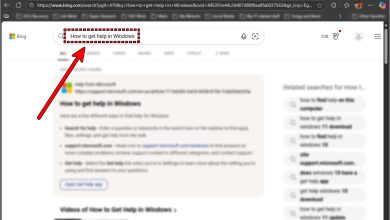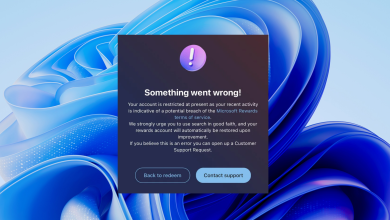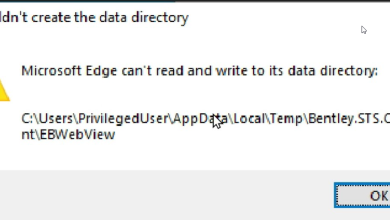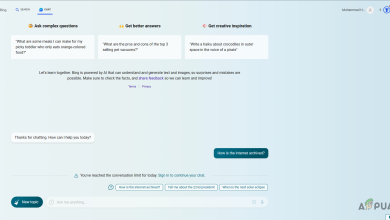Fix: Blank Screen or White Pages on Microsoft Edge
When you open Edge, sometimes you might only see a blank or white screen. There are no tabs, address bar, or website content showing, even though the Edge process is running in Task Manager. This usually means the browser started, but it can’t display its user interface.

The most common reason for this is a problem between Edge’s hardware acceleration feature and your graphics drivers. Other possible reasons include a damaged user profile, broken startup settings, or problems caused by experimental features (known as flags).
Troubleshooting
The first thing you should do is clear the cache and cookies from your browser. Most of the time, this simple step can fix the problem. Clear your cache and then proceed with the other methods as needed.
- Open Edge.
- Press CTRL, SHIFT, and DELETE keys simultaneously (CTRL + SHIFT + DELETE).
- Check Form data, Cached data and files, and Cookies and saved website data.
- Select Everything from the drop-down list under Time range to clear.
- Click Clear.
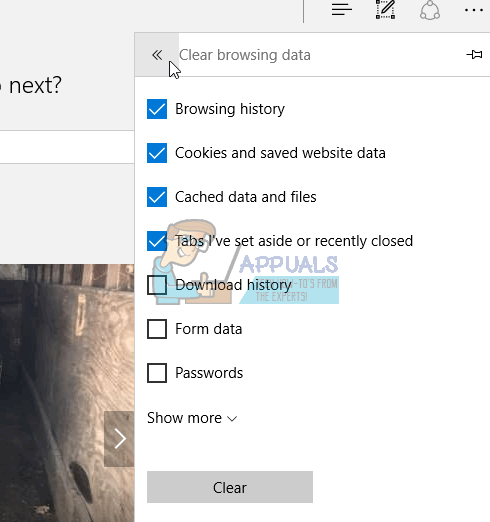
1. Disable Extensions
Disabling your extensions will help you identify the problem. If turning off all extensions fixes the issue, then one of the extensions might be causing it. To find out which one is the culprit, enable the extensions one by one and check if the problem returns.
- Open Edge.
- Click the 3 dots in the top-right corner.
- Click Extensions.
- Click on the extension you want to disable.
- Click the switch under the extension name to turn it off.
- Repeat this for all extensions.
Check if the issue is resolved.

2. Disable Hardware Acceleration
Disabling Hardware Acceleration can also resolve the blank page problem. Follow these steps to turn it off. Since Microsoft Edge doesn’t have this setting available directly in the browser, you need to change it through Windows settings.
- Hold the Windows key and press R.
- Type inetcpl.cpl and press Enter.
- Click the Advanced tab.
- Check Use software rendering instead of GPU rendering.
- Click Apply then OK.
- Restart Edge.

3. Reset Microsoft Edge
- Open Microsoft Edge.
- Open Task Manager by pressing ALT, CTRL, and DELETE keys together (ALT + CTRL + DELETE).
- Right-click on Microsoft Edge in Task Manager and select Go to details.

- Locate MicrosoftEdgeCP.exe (in the description it should say Microsoft Edge Content Process).
- Right-click MicrosoftEdgeCP.exe and select End task.

- Repeat this for all MicrosoftEdgeCP.exe entries.
If that doesn’t work, try the steps below:
- Hold the Windows key and press E.
- Type C:\Users\[your profile name]\Packages\Microsoft.MicrosoftEdge_8wekyb3d8bbwe in the address bar (the box at the top) and press Enter.
- Delete everything in this folder. To do this, hold CTRL and press A (CTRL + A). Then right-click on one of the files and select Delete. Click OK if it asks for permission.
- Press the Windows key and type Windows PowerShell in the search box.
- Right-click Windows PowerShell and select Run as administrator.
- Copy and paste the command below into PowerShell and press Enter:
Get-AppXPackage -AllUsers -Name Microsoft.MicrosoftEdge | Foreach {Add-AppxPackage -DisableDevelopmentMode -Register “$($_.InstallLocation)\AppXManifest.xml” –Verbose}
4. Rename Files
- Hold the Windows key and press E.
- Type C:\Windows\Prefetch in the address bar and press Enter.
- Find the files named EXE-xxxxxxxx.pf (where “xxxxxxxx” is a random set of numbers or letters).
- Right-click these files (there might be more than one) and rename each file to anything you like. Simply right-click, select Rename, type a new name, and press Enter.
Now restart Microsoft Edge. This should fix the blank page problem.
5. Delete or Rename the Default Folder
- Hold the Windows key and press E.
- Type C:\Users\[your profile name]\Packages\Microsoft.MicrosoftEdge_8wekyb3d8bbwe\AC\MicrosoftEdge\User in the address bar and press Enter.
- Delete or Rename the Default folder. To do this, right-click the Default folder and select Delete. If it asks for confirmation, click OK. Or, right-click the Default folder and select Rename. Type a new name and press Enter.
Open Edge and it should now work fine. Microsoft Edge will automatically create a new default folder for you.
6. Scan the Computer
If a virus is causing the problem, there are two things you should do. First, if you don’t already have one, download a good antivirus program and scan your computer for viruses. You can also use Malwarebytes to check your computer for any infections.
If that doesn’t solve your problem, try performing a System Restore, especially if the issue only started recently. Go here and follow the step-by-step guide to restore your system.
